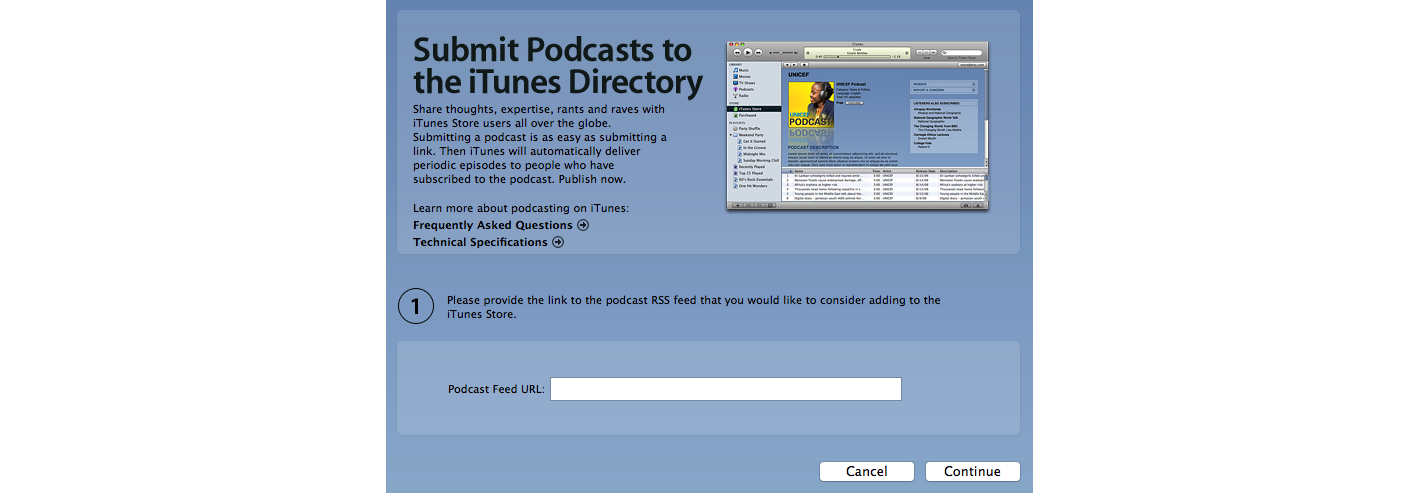In our new series WTF podcasting we explain today what the iTunes podcast directory is, why your podcast needs to be in it and what you need to consider before submitting your podcast.

What is the iTunes podcast directory?
iTunes is, first and foremost, known as Apple's hub for selling media (Music, Movies, TV shows, Books and Apps) to their customers. But besides that it is also the largest and most influential podcast directory in the world.
Before we continue, let's get a common misconception about iTunes and and it's role in podcasting out of the way: iTunes will not host your media files! It's only a directory, meaning you can tell it where your podcast lives and it will keep an entry for it so listeners can find it easily. Much like a phone book for podcasts.
What can the iTunes podcast directory do for your podcast?
iTunes is incredibly important for podcasts to be discovered by new listeners. It has a pretty powerful search and category system, provides rankings and features popular but also new podcasts regularly and has the possibility for your listeners to rate and review your show. Additionally, Apple's own Podcasts app, that comes pre-installed with every new iPhone and iPad, uses the directory to provide a catalog of podcasts to it's users. Also a lot of other apps use iTunes as a database for the podcast discovery functions they provide for their users.
So, you see, being in the iTunes directory is essential for podcasts, especially for new ones.
What are the requirements?
The base requirement is, of course, a podcast and a feed for it. Apple has put up a fairly long list of requirements and advisories for creating a podcast feed. In short, it requires the feed to be RSS 2.0 conform, to contain a link to a cover image that is at least 1400 x 1400 pixels but not more than 3000 x 3000 pixels big and the server that holds your audio files needs to support byte-range requests, so the files can be streamed. If that sentence sounded like gibberish to you, don't worry we've got you covered. Podigee automatically provides an iTunes compatible feed without the need to read page-long specifications and to learn how to set up a web server and publishing software. Sounds good?
Then sign up for your free Podigee trial right now!
How do I get in?
After you have your podcast feed set up and are ready to go, you need to submit your podcast to the directory and wait for it to be accepted. We have put together a little guide for submitting your podcast to the iTunes directory so you don't get lost on the way.

The submission form does a first check of the feed if it meets the base requirements. Sometimes that check is broken and only works after trying a second time or a few hours later. If not you should check your feed for errors or, if you use a podcast hosting provider (like us) contact the support to help you out.
After the submission is complete you need to wait a few days, normally between 2 and 5 (but it can also take longer sometimes), and you will receive an email saying that your podcast was added to the catalog (or if not, why).
I'm in, what now?
After you have been accepted to the directory, the hard work begins: Creating more awesome content to stun your listeners and make them leave 5 star reviews all over the place. It almost never hurts reminding your audience to leave a review, a comment or tweet about your show. Also don't forget to promote older episodes of your show regularly, not everyone in the audience follows your show from the beginning. The best place for such a fishing for compliments section is usually the end of an episode.